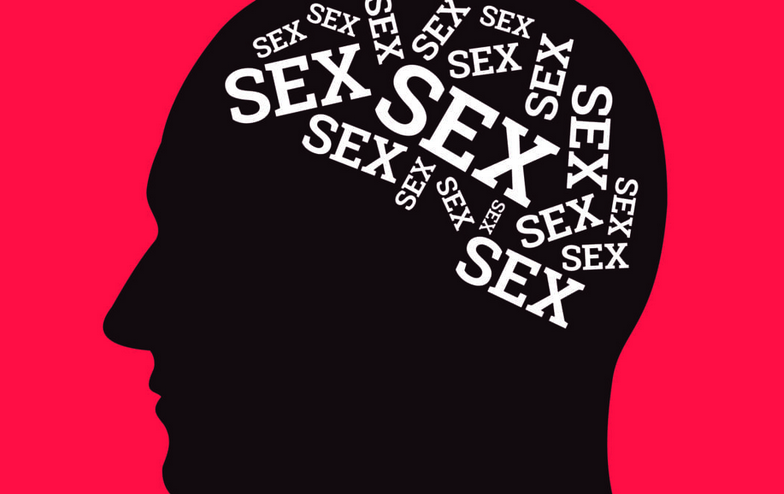Sex addiction, also known as compulsive sexual behavior, refers to an ongoing, uncontrollable drive to engage in sexual activity despite experiencing negative emotional, physical, or social consequences. Unlike a healthy expression of sexuality that brings fulfillment and connection, sex addiction often leaves the individual feeling emotionally drained, guilty, or even ashamed. It can take a serious toll on personal relationships, careers, and overall mental well-being.
At its core, sex addiction mirrors many aspects of other behavioral addictions. One of the clearest signs is a total lack of control: even when a person knows that their actions could lead to painful consequences, they feel unable to stop. The urge dominates rational thinking, and this constant compulsion begins to interfere with every area of life.
In contrast to individuals who simply have an active libido, someone struggling with sex addiction tends to obsess over sex to an unhealthy degree. They might spend excessive time thinking about sex, planning sexual encounters, or seeking opportunities for gratification—all while hiding their behavior from loved ones. The secrecy, shame, and isolation only deepen the emotional struggle.
Unless there’s a powerful outside intervention—whether it's a serious consequence, a relationship breaking down, or a personal breakdown—the cycle is likely to continue. In addition to ruining relationships and careers, this kind of addiction increases the risk of sexually transmitted infections, including HIV, especially when impulsive decisions override concerns for protection and safety.

What Exactly Is Considered Sex Addiction?
Sex addiction refers to an overpowering and chronic pattern of sexual behavior that dominates a person’s thoughts and actions, often to the detriment of everything else. For those struggling with it, sexual activity—whether real, imagined, or virtual—becomes the central force in life. It can push aside relationships, personal responsibilities, hobbies, and even health, becoming an obsession that disrupts all sense of balance.
People with sex addiction may spend enormous portions of their day thinking about sex, fantasizing, planning encounters, or engaging in risky behaviors. Over time, this relentless cycle starts to erode the foundation of their emotional, professional, and social lives. What might have started as intense desire gradually transforms into a destructive pattern that the individual can no longer control.
Yet, there’s significant debate in the medical and psychological communities about how to define sex addiction—and whether it should be classified as an addiction at all. The Diagnostic and Statistical Manual of Mental Disorders (DSM), which is widely used in psychiatry, does not officially recognize sex addiction as a distinct diagnosis. This lack of consensus makes it difficult to draw a clear clinical line between high libido and pathological behavior.
Human sexuality is incredibly complex, with wide variation in desire, expression, and frequency. What is problematic for one individual may be entirely normal for another. That’s why context is everything. The distress, disruption, and compulsive nature of the behavior—not simply its frequency—are what distinguish addiction from healthy sexuality.
Altered Terms and Labels for Sex Addiction
There is no single, universally accepted term for sex addiction. Over the years, researchers and clinicians have used a range of descriptions to label and understand this behavior, often depending on the focus of the symptoms or the lens through which the condition is viewed.
Some professionals use the term hypersexual disorder, which encompasses a broad pattern of obsessive thoughts, intense urges, and compulsive behaviors centered on sex, fantasies, or arousal. According to this view, hypersexuality becomes a disorder when it causes noticeable emotional distress or interferes with one’s ability to function normally.
You may also hear the condition referred to by other names like:
-
Sexual dependency – focusing on the emotional reliance on sex
-
Sexual compulsivity – emphasizing the irresistible urges to act
-
Hyperlibido or hyperlibidinism – referencing abnormally heightened sexual desire
-
Sexual impulsivity – pointing to an inability to resist sexual urges
-
Sexaholism – a colloquial term based on the 12-step model
Historically, terms like nymphomania (for women) and satyriasis (for men) were used, although they are now considered outdated and often offensive.
There are also closely related concepts that exist on the spectrum of sexual compulsivity:
-
Erotomania: A delusional belief that someone is in love with you.
-
Don Juanism / Don Juanitaism: A compulsion to seek out multiple sexual partners—traditionally used to describe men, with a female counterpart in the term “Don Juanitaism.”
-
Pornography addiction: A related condition that focuses more on visual sexual content and masturbation than physical encounters.
-
Compulsive masturbation and paraphilia-related disorders may also overlap with or contribute to broader patterns of hypersexuality.
It’s also important to distinguish clinical terms from cultural slang. Many words used casually—like “slut,” “manwhore,” or other derogatory labels—have no diagnostic meaning. In fact, they can perpetuate harmful stereotypes and shame, especially toward individuals with naturally high sex drives. Medical classification should always consider the context, the consequences, and the emotional distress involved.

The Overlap: Sex Addiction and Porn Dependency
There’s considerable crossover between sex addiction and pornography addiction. Both involve persistent sexual preoccupation and constant arousal. But the way these urges are acted out can differ.
Someone dealing with porn addiction tends to engage primarily with visual sexual content—often for hours at a time. The behavior is frequently coupled with compulsive masturbation and can become a person’s primary sexual outlet. The addiction lies in the consumption of pornographic material itself, rather than in seeking physical encounters.
On the other hand, someone suffering from sex addiction may also view pornography compulsively, but it doesn't stop there. They actively pursue real-life sexual experiences, including risky or impulsive behavior. They might seek out multiple partners, use dating apps excessively, or pay for sex, all in an attempt to feed their compulsions.
While the two conditions are distinct, they are far from mutually exclusive. In fact, many sex addicts also struggle with porn addiction as part of a wider pattern of hypersexual behavior. Understanding the difference can be crucial in treatment, as the tools for managing compulsive media consumption may differ from those needed to break patterns of risky interpersonal behavior.
How to Tell If You're Struggling With Sex Addiction
Identifying whether you're dealing with sex addiction isn’t always straightforward. There’s no universally accepted checklist or diagnostic tool, primarily because the clinical community still debates how to categorize the condition. However, that doesn’t mean the signs aren’t there. Many individuals who battle sex addiction report similar behavioral patterns and emotional experiences that can serve as strong indicators of a problem.
Here are some of the most telling signs that your sexual urges may be veering into addictive territory:
-
Sexual thoughts dominate your mind: You constantly think about sex, fantasize, or plan sexual encounters. These thoughts aren’t fleeting or occasional—they’re intrusive and relentless, often taking center stage during work, study, or even social interaction.
-
You’re frequently in a state of arousal: Despite already engaging in sexual activities, including masturbation, you remain chronically aroused. You might even masturbate multiple times a day without ever feeling satisfied.
-
Your behavior affects how you relate to others: Your conversations, body language, and even workplace interactions are influenced by sexual thoughts. Others might find your behavior inappropriate, which can cause tension in professional or personal settings.
-
You disregard the consequences: Whether it's cheating, skipping work for sex, or spending money you can't afford on sexual services, you continue despite knowing the risks.
-
You push boundaries to chase a thrill: What used to satisfy you no longer does. You escalate your sexual behaviors—sometimes crossing legal, moral, or physical safety lines—to maintain the same level of excitement.
-
You’re dishonest about your activities: Lying becomes second nature, especially to your partner or close friends. You hide what you’re doing and fabricate explanations to cover your tracks.
-
Long-term relationships are difficult to maintain: Emotional bonds may take a backseat to your sexual needs. Infidelity, lack of intimacy, and dishonesty often cause relationships to fall apart.
-
You feel emotionally drained: The constant pursuit of sex leaves you feeling worse, not better. Guilt, shame, regret, and loneliness are common companions.
-
You’ve tried to stop—but failed: Despite promising yourself you’ll quit or cut back, the compulsive urges return. Any period of abstinence is usually followed by relapse and more intense behavior.
While not everyone will experience every sign on this list, even a few persistent symptoms can point to an unhealthy, addictive relationship with sex. Recognizing these red flags early on can be the first step toward getting help.
When Passion Becomes Destructive: The Key Differences Between Enjoying Sex and Addiction
It’s important not to confuse a healthy and enthusiastic sex life with addiction. Enjoying sex, even frequently, does not mean there’s a problem. Some people naturally have higher libidos or more adventurous sex lives—and that’s completely normal as long as it's consensual, safe, and fulfilling.
The line between high libido and addiction is crossed when behavior becomes compulsive, risky, and emotionally damaging.
A person with a healthy sexual appetite can control their desires. They can say no, postpone gratification, and still feel emotionally stable when not engaging in sex. In contrast, someone dealing with addiction will feel anxious, irritable, or even depressed if they can’t fulfill their urges. The behavior continues regardless of harm to self or others.
Sex addicts may also experience withdrawal-like symptoms when abstaining—similar to what substance users endure. This can include irritability, mood swings, or even physical symptoms like insomnia or restlessness.
Ultimately, the distinction comes down to control, consequences, and emotional wellbeing. A vibrant sex life should enhance life—not cause it to unravel.
Exploring the Various Forms of Sex Addiction
Sex addiction isn’t one-size-fits-all. People with this condition often exhibit very different behaviors, depending on what type of sexual activity they are drawn to. Although the medical field hasn't agreed on a standardized set of categories, therapists and addiction specialists often see recognizable patterns that help classify a person’s behavior.
Common types of sex addiction include:
-
Voyeuristic behavior: Secretly watching others engage in sexual activity. This often involves hiding and observing from a distance and may be accompanied by masturbation.
-
Exhibitionism: Engaging in sexual acts in public spaces or exposing oneself to others. This risk of being seen can become a part of the thrill.
-
Transactional sex: Paying for sex or sexual performances, whether with money, drugs, or gifts. This includes visiting sex workers or engaging in live sex chats online.
-
Sex work or trading sex: Some individuals fuel their addiction by offering themselves for sex in exchange for money or resources.
-
Anonymous encounters: Having sex with strangers, sometimes arranged online or in settings specifically intended for impersonal hookups.
-
BDSM/pain-exchange sex: Seeking out encounters that involve physical pain as a primary component of arousal.
-
Humiliation-based sex: Sexual acts where emotional degradation—often of one partner—is the source of arousal.
-
Aggressive or violent sex: Participating in encounters that blur the line between rough sex and physical harm. Sometimes, this involves role-playing scenes like consensual non-consent.
-
Non-consensual activity: In the most extreme and dangerous cases, a person’s compulsion may lead them to disregard consent altogether, crossing into criminal territory such as sexual assault or rape.
It’s essential to remember that many of these behaviors can occur within consensual and healthy sexual relationships. What transforms them into signs of addiction is the loss of control, the disregard for consequences, and the emotional suffering they bring.

The Repeating Cycle: Stages of Sex Addiction
Like many other forms of addiction, sex addiction often unfolds in predictable cycles. While every person’s experience is unique, the progression of symptoms and behaviors tends to follow a pattern that repeats itself—sometimes for years, or even decades.
Here are the most commonly observed phases:
-
Fantasy and preoccupation: The addict becomes mentally consumed with sex. They fantasize throughout the day, think obsessively about encounters, and even create elaborate imaginary scenarios that feed their craving.
-
Ritualization: This phase involves the actions and routines leading up to sexual activity. It might include browsing for pornography, chatting with strangers online, getting dressed in a specific way, or revisiting familiar locations. These rituals are emotionally charged and heighten arousal.
-
Compulsive acting out: The individual finally engages in sexual behavior. This phase is often brief but intense. Ironically, even if climax is reached, there’s rarely lasting satisfaction. The craving returns quickly.
-
Remorse and despair: After the act, the person is often flooded with guilt, shame, or self-loathing. Depression may set in, along with a vow to never repeat the behavior again. Unfortunately, without help, the cycle usually restarts soon after.
The emotional whiplash caused by these stages can be exhausting—and deeply damaging. Over time, the person’s sense of self erodes, making it even harder to seek help or break free.

What Drives Sex Addiction? Exploring the Root Causes
The reasons behind sex addiction are complex, multi-layered, and deeply personal. Just as with substance use disorders or other behavioral addictions, the roots are rarely simple. A mix of biological, psychological, and social influences typically intertwine, creating a powerful engine that drives compulsive sexual behavior.
Biological Factors Behind Compulsive Sexuality
Sex addiction is often associated with imbalances in the brain’s reward system. This system—especially areas like the ventral tegmental area, amygdala, and nucleus accumbens—controls our sense of pleasure and reinforcement. When a person repeatedly engages in sexual acts, it triggers a surge of dopamine, the brain’s “feel-good” chemical.
Over time, this repeated stimulation can cause changes in brain chemistry, leading to tolerance, cravings, and withdrawal—hallmarks of addiction. People with natural imbalances in dopamine production or receptor sensitivity may be even more vulnerable.
Hormones also play a key role. Elevated levels of testosterone can increase libido, though on its own, high testosterone doesn’t necessarily cause sex addiction. But when combined with emotional or psychological distress, it may tip the scales.
Injury to the frontal or temporal lobes—areas responsible for impulse control and sexual regulation—can also lead to hypersexual behavior. In some cases, neurological diseases or trauma have triggered sudden changes in sexual compulsion.
The Cultural and Social Triggers
We live in a world saturated with sexual imagery. From advertising and entertainment to social media and dating apps, sexual content is always within reach. This constant exposure can desensitize individuals and reinforce the idea that sex is a quick solution to emotional discomfort.
Western culture in particular places a premium on sexual performance, attractiveness, and confidence. The pressure to be desirable—and the fear of being unwanted—can breed insecurity, especially in people with low self-esteem. For those already prone to addiction, these cultural cues can ignite a deeper fixation.
The availability of internet pornography has also changed the landscape entirely. In the past, access to extreme or niche sexual content was limited. Now, it’s just a few clicks away, 24/7. This easy access can feed compulsive viewing, escalating desires and distorting expectations around sex.

The Psychological Roots: How Mental Health Intersects With Sex Addiction
Emotional distress often lies at the heart of sex addiction. For many, compulsive sexual behavior becomes a form of escapism—a way to temporarily avoid feelings of sadness, anger, loneliness, or worthlessness. But the relief is fleeting, and the cycle continues.
Here are some of the key psychological factors linked to sex addiction:
-
Low self-esteem: Feeling unworthy or unloved may drive someone to seek constant validation through sex.
-
Depression and anxiety: These conditions often coexist with sex addiction. The chemical relief from sexual activity can mask symptoms—but only temporarily.
-
Obsessive-compulsive tendencies: For some, sexual rituals offer a sense of order or control. This becomes compulsive over time.
-
Personality disorders: Traits like emotional instability, impulsiveness, and difficulty forming secure relationships are common in people with borderline personality disorder or narcissistic traits—both of which are frequently found in sex addicts.
-
Past trauma or abuse: Especially in cases involving childhood sexual abuse, compulsive sexual behavior can emerge as a coping mechanism. While tragic, it’s a pattern well-documented in recovery literature.
-
Substance use disorders: There’s significant overlap between sex addiction and drug/alcohol abuse. The two conditions often feed into each other.
Additionally, individuals with neurodivergent traits, such as those on the autism spectrum or living with ADHD, may struggle with emotional regulation or impulse control—raising the likelihood of developing problematic sexual behaviors.

When Sex Becomes Destructive: The Emotional and Physical Toll
Sex addiction doesn’t just affect your mind. It impacts your entire life—emotionally, physically, financially, and socially. What starts as a hidden struggle eventually spreads into every area, often with devastating consequences.
Emotional Signs and Symptoms
While actively engaging in the addiction cycle, sex addicts may feel bursts of euphoria, excitement, and anticipation. But these highs are quickly followed by lows: guilt, shame, self-loathing, and despair. Some feel disgusted with their own behavior, but can’t stop. These emotional crashes can lead to:
-
Chronic anxiety
-
Social withdrawal
-
Depression
-
Suicidal thoughts
-
Self-harming behaviors
Withdrawal—when a person tries to stop cold turkey—can trigger even more instability: mood swings, restlessness, agitation, and crippling loneliness.
Physical Consequences
Physically, sex addiction can result in:
-
Excessive arousal or inability to focus
-
Sleep deprivation due to late-night activities or emotional stress
-
Fatigue from constant masturbation or intercourse
-
Injuries to genital areas
-
Increased risk of sexually transmitted infections, including HIV
-
Withdrawal symptoms like headaches, insomnia, impotence, and lack of sexual satisfaction (anorgasmia)
When a person neglects health, nutrition, or rest to satisfy their urges, the body begins to pay the price.
Long-Term Damage: The Fallout of Untreated Sex Addiction
The ripple effect of sex addiction can extend far beyond the addict. Marriages end. Careers collapse. Friendships wither. And even after seeking recovery, rebuilding these aspects of life is a long and uphill battle.
Some of the long-term consequences include:
-
Relationship breakdowns – infidelity, dishonesty, and neglect often lead to separation or divorce
-
Job loss – due to performance issues, absenteeism, or inappropriate behavior at work
-
Debt – from paying for sex, pornography subscriptions, or escort services
-
Criminal charges – in extreme cases, behaviors may cross legal boundaries
-
Permanent sexual health problems – including incurable STDs, pelvic damage, or erectile dysfunction
-
Low self-worth and identity confusion – even years into recovery, shame can linger
Worst of all, the addict may struggle to form new, healthy relationships. A past marked by compulsive behavior can feel like an emotional stain, one that’s hard to explain or heal from—even when the person is working to change.

Looking at the Numbers: What the Research Tells Us
Although data varies by source, experts estimate that up to 6% of adults struggle with some form of compulsive sexual behavior. And this number might be low, considering the stigma and secrecy that often keep people from seeking help.
-
Roughly 80% of sex addicts are male, although women are more likely to act out porn addiction in real-life encounters.
-
Over 40% of internet users regularly view online pornography.
-
About 4 in 5 sex addicts also have another addiction—most commonly drugs or alcohol.
-
People who experienced sexual abuse in childhood are at significantly higher risk of developing sex addiction later in life.
-
Studies show that the average male sex addict reports 32 different partners before entering treatment; for women, the average is 22. Some extreme cases (like NBA legend Wilt Chamberlain) claim numbers in the thousands.
Finding Support: Treatment, Recovery, and Moving Forward
There is hope for those living with sex addiction. The recovery process isn't easy, but it’s real—and it begins with acknowledging the problem.
Treatment Approaches
Psychotherapy remains the cornerstone of sex addiction treatment. Common methods include:
-
Cognitive Behavioral Therapy (CBT): Helps challenge distorted thoughts and replace unhealthy patterns
-
Dialectical Behavior Therapy (DBT): Especially effective for those with co-occurring emotional regulation issues
-
Motivational Interviewing (MI): Encourages readiness to change without judgment
-
Group therapy and 12-step programs: Organizations like Sex Addicts Anonymous (SAA), Sex and Love Addicts Anonymous (SLAA), and Sexual Compulsives Anonymous (SCA) offer community-based support and structured steps toward healing
There is no miracle drug to "cure" sex addiction, but medications may help with co-occurring conditions. For instance, SSRIs (antidepressants) may reduce compulsive urges while treating depression or anxiety. HIV antivirals and other sexual health medications may be prescribed if the addiction led to risky behavior.
Challenges in Diagnosis
One of the biggest hurdles in treatment is the ongoing debate about how to define sex addiction. Without clear diagnostic standards, some professionals may overlook the condition—or mislabel it as something else (like borderline personality disorder or ADHD). This makes self-awareness and patient advocacy even more important.
Can It Be Prevented?
Preventing sex addiction isn’t as simple as abstaining from sex. Unlike substance addictions, sexual expression is a natural and often healthy part of life. So instead, prevention focuses on:
-
Addressing underlying trauma early
-
Building emotional resilience and self-worth
-
Recognizing warning signs like obsessive sexual thoughts or avoidance behaviors
-
Seeking help for co-occurring issues, such as depression, substance abuse, or anxiety
If you—or someone you know—is beginning to feel consumed by sexual behavior or thoughts, it's never too early to reach out to a GP or mental health professional. The sooner the conversation starts, the easier it is to change course before addiction takes hold.
Final Words: Choosing Recovery Over Chaos
Sex addiction may be a deeply private battle, but it doesn’t have to be fought alone. The damage it causes can be devastating—but recovery is possible. It starts with one courageous step: admitting there's a problem.
You don’t need to have all the answers. You just need the willingness to ask for help. And with time, support, and therapy, you can reclaim your sense of peace, rebuild your life, and rediscover intimacy in its truest form—not as a compulsion, but as a choice.









